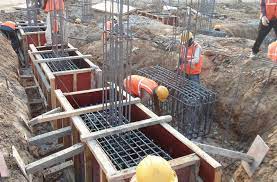A Bill of Quantities (BOQ) is an essential document in any construction project. It outlines the quantities of materials, labor, and equipment required for the project, along with their corresponding costs. However, preparing a BOQ can be a complicated and time-consuming process, and mistakes can lead to significant cost overruns and delays. In this blog, we'll explore some of the most common mistakes to avoid when preparing a BOQ for your construction project. Whether you're a contractor or a project owner, this information will help you ensure that your project stays on track and within budget.
Common Mistakes to Avoid When Preparing a Bill of Quantities
A bill of quantities (BOQ) is a document that lists all the materials, labor, and equipment needed to complete a construction project. It is an essential tool for project managers and contractors as it helps them to estimate the total cost of the project accurately. However, preparing a BOQ can be a complicated and time-consuming process, and even the smallest mistakes can have a significant impact on the project's cost and timeline. In this article, we will focus on the common mistakes to avoid when preparing a BOQ, specifically lack of clarity in descriptions and measurements.
Avoiding Ambiguity in Descriptions
One of the most common mistakes that contractors make when preparing a BOQ is using vague or ambiguous descriptions. When the descriptions are not clear, it can lead to misunderstandings between the project team and the contractor. For example, if the BOQ mentions "painting work," it is unclear what kind of paint is required or how many coats are needed. This can lead to the contractor using the wrong type of paint, resulting in extra costs to redo the work.
To avoid ambiguity in descriptions, it is essential to use precise and specific language. For example, instead of using the term "painting work," the BOQ could specify the type of paint, the number of coats required, and the surface area to be covered. This will ensure that the contractor has a clear understanding of what is required, and there is no room for misinterpretation.
Using Standard Units of Measurement
Another common mistake that contractors make when preparing a BOQ is using incorrect or inconsistent units of measurement. The BOQ must provide accurate measurements for all the materials and labor required for the project. If the measurements are incorrect, it can lead to over or underestimation of the total cost of the project, which can cause problems during the construction phase.
To avoid using incorrect units of measurement, it is essential to use standard units of measurement that are widely accepted in the construction industry. For example, instead of using different units of measurement for length and width, the BOQ should use a standard unit of measurement like meters or feet for both.
It is also important to ensure that the units of measurement used in the BOQ are consistent throughout the document. Inconsistency in units of measurement can lead to confusion and errors in estimating the total cost of the project.
How to Avoid These Mistakes
Avoiding mistakes is crucial in any industry, but it is especially important in construction. Construction projects are complex and involve many stakeholders, including architects, engineers, contractors, and subcontractors. One mistake can lead to delays, cost overruns, and even safety hazards. In this article, we will discuss how to avoid mistakes by ensuring clarity in descriptions and measurements, conducting thorough site inspections, and seeking professional help.
A. Ensuring Clarity in Descriptions and Measurements
Defining Terms and Abbreviations
Clarity in descriptions and measurements begins with defining terms and abbreviations. Construction projects involve many technical terms and abbreviations that can be confusing for those who are not familiar with them. To avoid confusion, it is essential to define these terms and abbreviations in a project manual or specification document.
Using Industry Standards
Another way to ensure clarity in descriptions and measurements is to use industry standards. Industry standards provide a common language and ensure consistency in the construction process. By using industry standards, everyone involved in the project will have a clear understanding of what is expected.
B. Conducting Thorough Site Inspections
Checking for Site-Specific Factors
Thorough site inspections are critical in identifying site-specific factors that can affect the construction process. Site-specific factors can include soil conditions, weather patterns, and accessibility. Identifying these factors early in the project can prevent delays and cost overruns.
Accounting for Local Regulations and Standards
Local regulations and standards must also be accounted for during site inspections. Local regulations and standards can vary by jurisdiction and can have a significant impact on the construction process. Failure to comply with local regulations and standards can lead to fines, delays, and legal disputes.
C. Seeking Professional Help
Consulting Quantity Surveyors
Quantity surveyors are professionals who specialize in managing construction costs. Consulting quantity surveyors can help ensure that the project is on budget and that costs are managed effectively. Quantity surveyors can also help identify potential cost-saving opportunities.
Engaging Contractors and Subcontractors
Engaging contractors and subcontractors is another way to avoid mistakes in construction projects. Contractors and subcontractors have specialized knowledge and expertise in their respective areas. By engaging contractors and subcontractors, the project can benefit from their knowledge and expertise.
Conclusion
Preparing a Bill of Quantities is a crucial task in any construction project. It helps in ensuring that everything is accounted for and prevents any unforeseen expenses that may arise later on. However, there are common mistakes that one should avoid making the process more effective and efficient. These include incomplete or inaccurate data, over-reliance on assumptions, and lack of communication with stakeholders.
By avoiding these mistakes and working with a professional, you can ensure that your Bill of Quantities is accurate, comprehensive, and meets the requirements of your project. This will help you to complete your construction project on time, within budget, and to the satisfaction of all stakeholders involved.


No comments yet